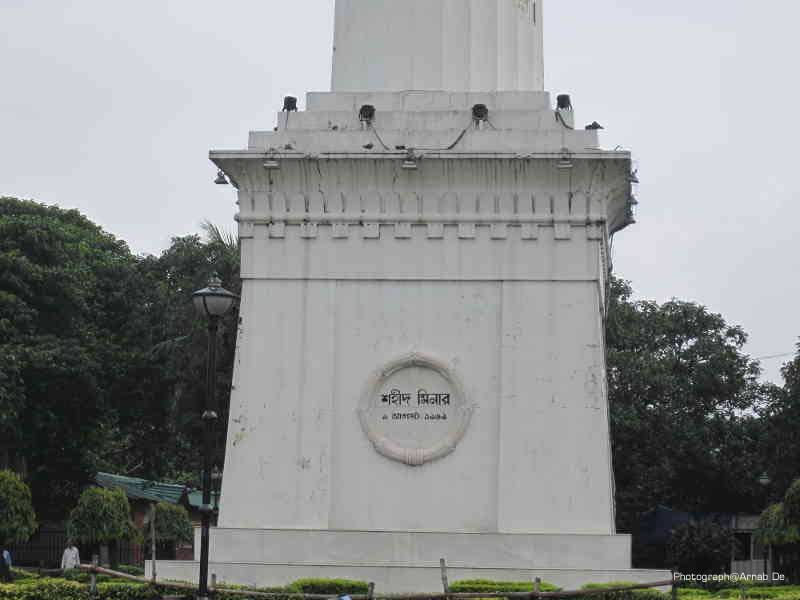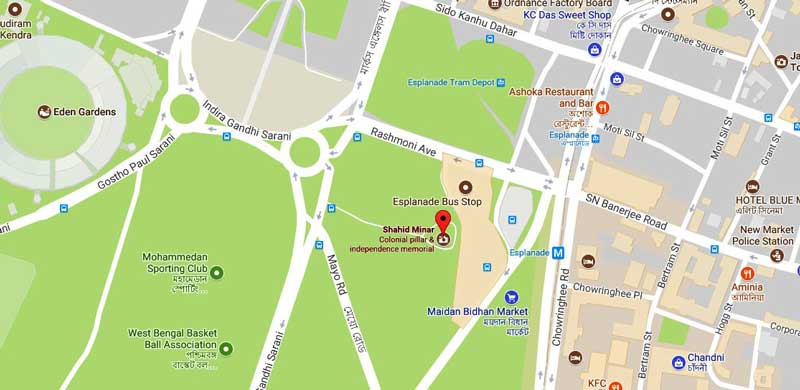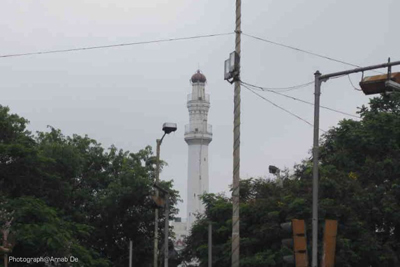
Considered as one of the most prominent and iconic landmarks of Calcutta, the Ochterlony Monument is located on the north-eastern side of Calcutta Maidan. Designed by J. P. Parker, it was erected by Burn & Company under the consultancy of Charles Knowles Robison in 1828. The cost of construction of the monument, including the foundation, was around Rs. 35,000/ and like many other heritage structures of Calcutta, this was funded by the public subscription. The 158 feet tall monument was dedicated to the memory of Major-general Sir David Ochterlony, a commander of the British East India Company. He was posthumously commemorated for his successful defense of Delhi against the fierce attack of the Marathas, under the leadership of Yaswantrao Holkar in 1804, and also for the victory of the East India Company in the Anglo- Nepalese War during 1814 to 1816.

Born in Boston, in Colonial America, David Ochterlony was the eldest son of Captain David Ochterlony and his wife, Katherine Tyle. During the American Revolution the family fled to Canada and after the death of his father in 1765 in the Saint Vincent, West Indies, his widow moved to England and remarried. Young Ochterlony attended the Boston Latin School and Dummer Charity School in Massachusetts. In 1777, at the age of 18, David Ochterlony came to India as an ordinary cadet. In June 1782, he was wounded and imprisoned during the Second Anglo-Mysore War and was released only when peace concluded in 1784. He was promoted to Captain in 1796 and to Major in 1800.
After successfully defending Delhi with a very inadequate force from the attack of the Marathas in 1804, he commanded a force on the banks of the River Sutlej to check the expansion of the Sikhs and was promoted to Major-general in 1814.After the victory in the Anglo- Nepalese War, he was granted baronetcy in November 1815, for his valuable contribution in the army and the following month given a pension of £1,000 per annum. In December 1816 he was made a Knight Grand Cross of the Order of the Bath, the most Honourable Military Order of the Bath. Sir David Ochterlony died in Meerut on 15th July, 1825.

So far as his personal life is concerned, Sir David Ochterlony completely accepted and embraced the Persian Mughal culture. He had the reputation to have thirteen Indian concubines or wives and the most distinguished among those beautiful women was Mahruttun Mubarak Ul Nissa Begum. She was a former Brahmin girl from Poona, later converted to Islam and was nicknamed Generallee Begum. She was the mother of the children of Sir David Ochterlony. It is said that, each evening he used to leave the British residency with his 13 wives, each on the back of their own elephant and move around the walls of the Mughal fort, for their airing, before heading back for dinner. His country house, built in the north of Delhi, was named ‘Mubarak Bagh’ after the name of his beloved wife, Mubarak Begum, who inherited it after his death.
It is believed that, a portion of the building was crowned with a dome and it was intended to form his mausoleum. Unfortunately, as the General demised at Meerut, about 40 miles from Delhi, his wishes could not be given fulfilled. However, despite her beauty, power and high status, Mubarak Begum was widely unpopular among the British and the Mughals alike. Her intense unpopularity combined with her background as a dancing girl ensured that no Mughal gentleman would use her mosque in Mubarak Bagh. Even today, it is referred by the locals as the ‘Rundi ki Masjid’, meaning the mosque of the whore.

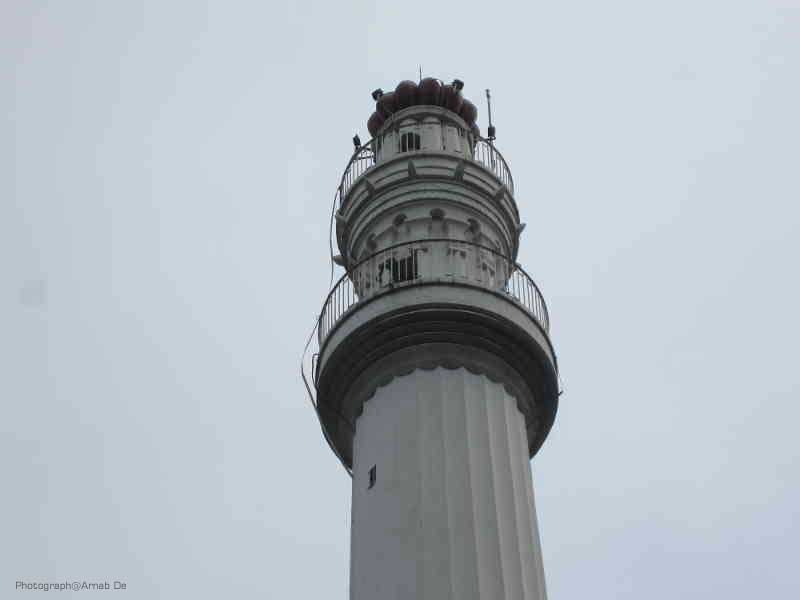
Described by Mark Twain as the ‘Cloud Kissing Monument’, the tall structure of Ochterlony Monument displays a blend of various architectural styles, which include an Egyptian foundation, a classical fluted column, probably inspired by those seen in Syria and a Turkish type dome on the top. The monument is equipped with two top balconies, accessible by a serpentine staircase, which consists of 198 steps from the ground level to the first balcony and another 25 from the first to the second balcony. The strong and stout base of the slender tower contains the doors leading to the inner staircase. The doors are ornamented with motifs, known as the ‘Wings of Desire’. The balconies offer a breathtaking panoramic view of the city, which is really mesmeric. However, the entrance through doors are now restricted to the public. Since the unfortunate suicide in 1997, when a youth jumped off from the lower balcony, police permission is required to climb to the top.
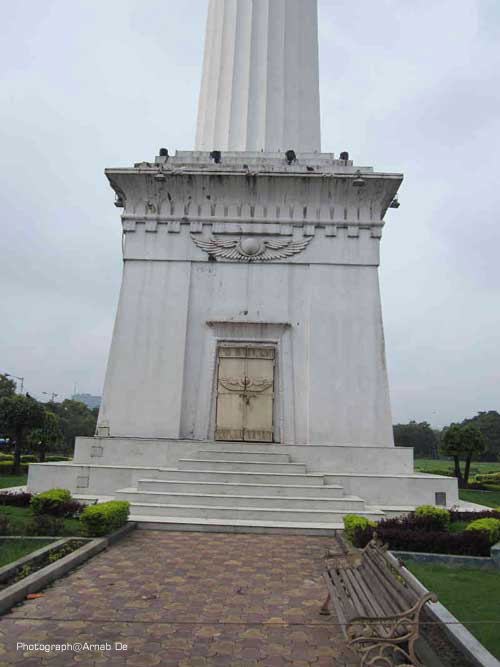

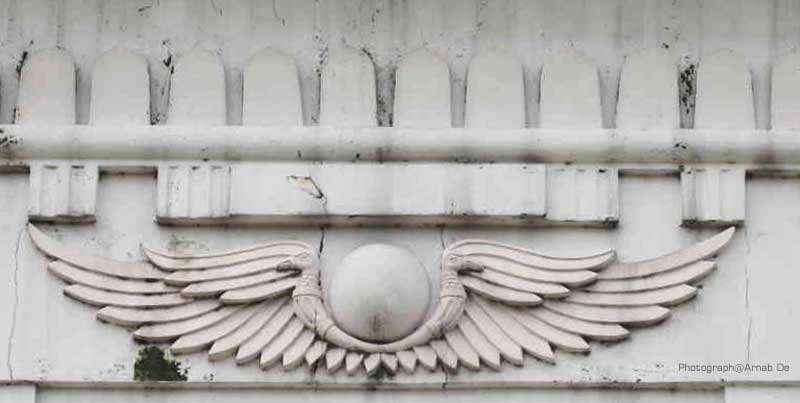
It is interesting to note that the first political meeting near the Monument was held in 1931, condemning the British for the killing of a young man in Hijli and the meeting was presided over by Rabindranath Tagore. On 9th August1969, decades after India gained independence, the monument was rededicated by the then ruling United Front Government of West Bengal to the memory of the martyrs of the Indian freedom movement. On the occasion, it was renamed the Shahid Minar, which translates to ‘the Martyr’s Monument.’
